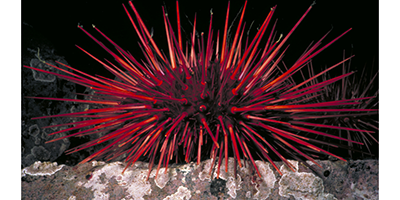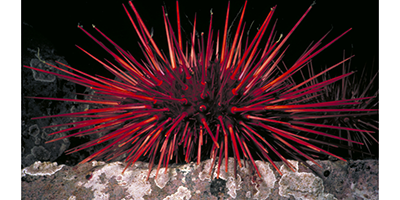Waste Disposal in Aquatic Embryos
Living organisms need to efficiently dispose of waste products and toxins in a way that limits the possibility that they are reabsorbed. For aquatic organisms in the early stages of development, this is not a trivial task. Nicholas Licata and Aaron Clark from the University of Michigan-Dearborn analyzed the case of sea urchins, suggesting that the cell protrusions (microvilli) that form on the outer surface of the developing embryo may be the answer. They show that toxins emitted from the ends of the microvilli are efficiently transported away, making it less likely that the embryo will encounter toxins that it previously expelled.
Licata and Clark use a hydrodynamic model to describe the characteristic fluid environment around an urchin embryo—a highly turbulent, wave-swept, rocky seashore. However, since the embryos are much smaller than the typical turbulent eddy currents, the dynamics of the system can be simplified and described in terms of laminar flow. The authors found that under such conditions the near-surface region of the embryo experiences strong advection, which sweeps waste away and leads to the formation of an almost toxin-free layer, with a thickness comparable to the microvilli height. Since most waste toxins are released from the ends of the microvilli (where the transmembrane proteins responsible for expelling toxins are localized), the toxins are swept away before they can diffuse back to the embryo surface and be reabsorbed. The model considered by the authors is not specific to sea urchins, and it could be applied to a wide variety of biological organisms and transport problems in fluid environments.
This research is published in Physical Review E.
–Katherine Wright





